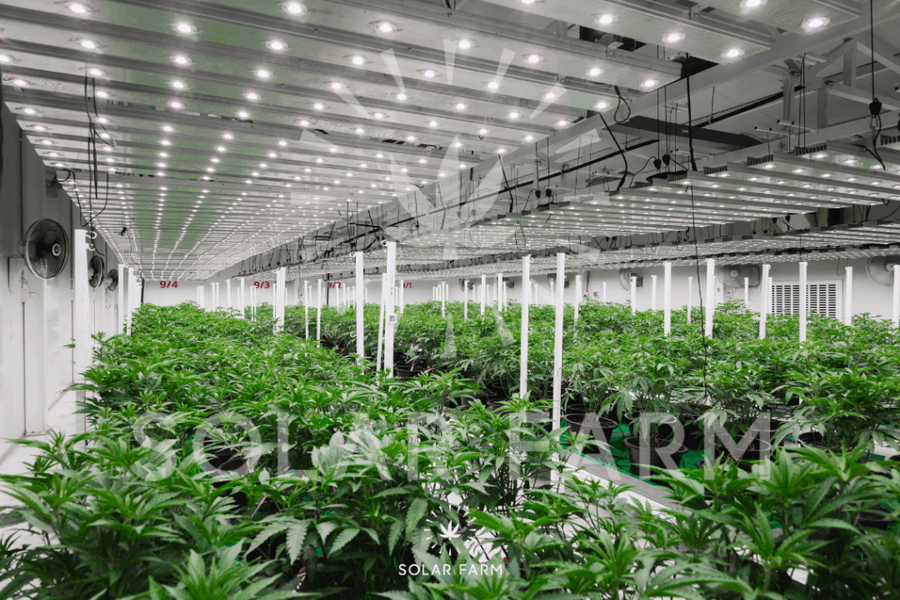Nursery Care for Clones
Solar Farm runs tight nursery care so clones start uniform; this control layer shortens veg and lifts COA pass rates at our cannabis farm in Bangkok for cannabis wholesale Thailand.

Nursery is where quality starts. GACP expects documented, repeatable practices from the moment you take a cutting, with traceability, hygiene, and staff oversight baked in. Our nursery at Solar Farm follows that model so every tray can pass an audit and progress cleanly into veg.
We set the environment for rooting, not speed trials. Cuttings sit at 24–26 °C with high humidity under domes, then harden down to ~70–75% RH as roots establish; CO₂ stays ambient (≈400–600 ppm), lights run 18/6 at low PPFD (100–200 µmol/m²/s), and VPD stays soft at 0.4–0.8 kPa. Domes are vented a little more each day so plants adapt without wilting, then removed once roots are reliable—a gradual off-ramp that reduces shock.

Media prep is standardized. We use washed, aerated coco in 4-inch pots, pre-water to field capacity, buffer with Ca/Mg, and hold substrate pH around 5.8–6.3.
The feed solution sits inside the coco range of ~ 5.5 – 6.5 (500-scale targets are lower in the nursery), which keeps key ions available and prevents early lockout.
Daily work follows a tight loop: set targets, measure, act, and log. Teams check turgor and color each morning, tap pots to confirm white roots at the edge, crack domes in short sessions during hardening, and record tray ID, mother ID, observations, and actions. Clean records and clear responsibilities are part of GACP/GPP expectations and make audits faster.
Progress is gated by age and roots, not hope.
- Day 10: first root check; weak trays stay fully covered.
- Day 12–14: partial vent if ≥30% of plugs show visible roots.
- Day 16–18: harden off if ≥70% show roots on all sides; discard unrooted or weak clones with supervisor approval.
These gates keep the cohort even and reduce downstream stall.

Hygiene is non-negotiable. Tools, domes, and benches are sanitized before use; PPE is required; movement is one-way (mother → clone → veg); and sticky cards are checked weekly. GPP-style hygiene controls, coupled with complete batch and training records, are what external reviewers expect to see.
We close the loop with defined quality gates and KPIs. “Harden-ready” means roots on two sides with no chlorosis; “transplant-ready” means roots around the plug with no wilt after two hours dome-free. We track rooting success at Day 14 and Day 18, rescue/discard rates, time to transplant readiness, 72-hour post-transplant stall, and nursery deviations per 1,000 cuts. Those numbers tell us, and buyers, that the process is
KPIs
- Rooting success at day 14 and day 18
- Rescue and discard rates
- Time to transplant readiness
- Post-transplant stall rate at 72 hours
- Nursery deviations per 1,000 cuts
Outcome: Uniform starts reduce disease pressure, keep canopies even, and support medical-grade, audit-ready lots at a GACP cannabis farm in Bangkok.
